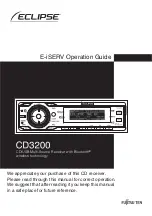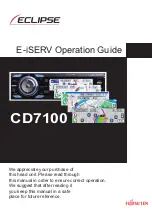
Voice over IP (VoIP)
Fundamentals
100
■
Using voice-data compression with compressing codecs, it is also possible to
make multiple IP-based telephone calls simultaneously on a 64 kilobit/s ISDN
line
■
Use of PC-supported system telephones (so-called “Softphones”) without extra
hardware costs
■
TC system networking using Q.SIG-IP via VPN connections (see also
PBX Net-
working
starting on page 127)
■
Setting up a “DECT over IP” network lets you use existing Ethernet cabling to
set up a DECT network. The special DECT base stations designed for this
purpose, can be handled using OpenCom 100’s Web interface (see
DECTnetIP
starting on page 117).
Integrating voice and data communication within the Intranet can provide savings
possible and a range of new possibilities. However joint usage of existing network
infrastructure may also cause conflicts, with IP address configuration via DHCP for
example (for details see
Start Procedure
starting on page 112). You should
therefore always plan the use of VoIP in the Intranet together with your network
administrator. This chapter will help you avoid possible problems.
9.1
Fundamentals
VoIP makes the transmission of voice and telephony signalling via IP (“Internet
Protocol”) possible. After a connection is established, the terminal collects voice
data (PCM data), which is then sent to the receiver using an IP packet. PCM data
can also be compressed to save bandwidth.
9.1.1 Propagation Delay and Bandwidth
IP-based data networks are generally not able to guarantee a specific minimum
bandwidth and defined propagation delay. A synchronised 64 kilobit/s ISDN line
guarantees a fixed data rate as long as the connection exists. In an IP-based data
network, the data rate and propagation delay can vary. Short-term bottlenecks or
retransmission due to errors may be the cause. A data flow interruption of a few
seconds is barely noticeable when fetching a Web page, but it can be seriously
interfere with a telephone call.
Summary of Contents for OpenCom 130
Page 1: ...130 OpenCom100 131 150 Mounting and Commissioning User Guide ...
Page 10: ...8 ...
Page 202: ...Index 200 Notes ...
Page 203: ......
















































